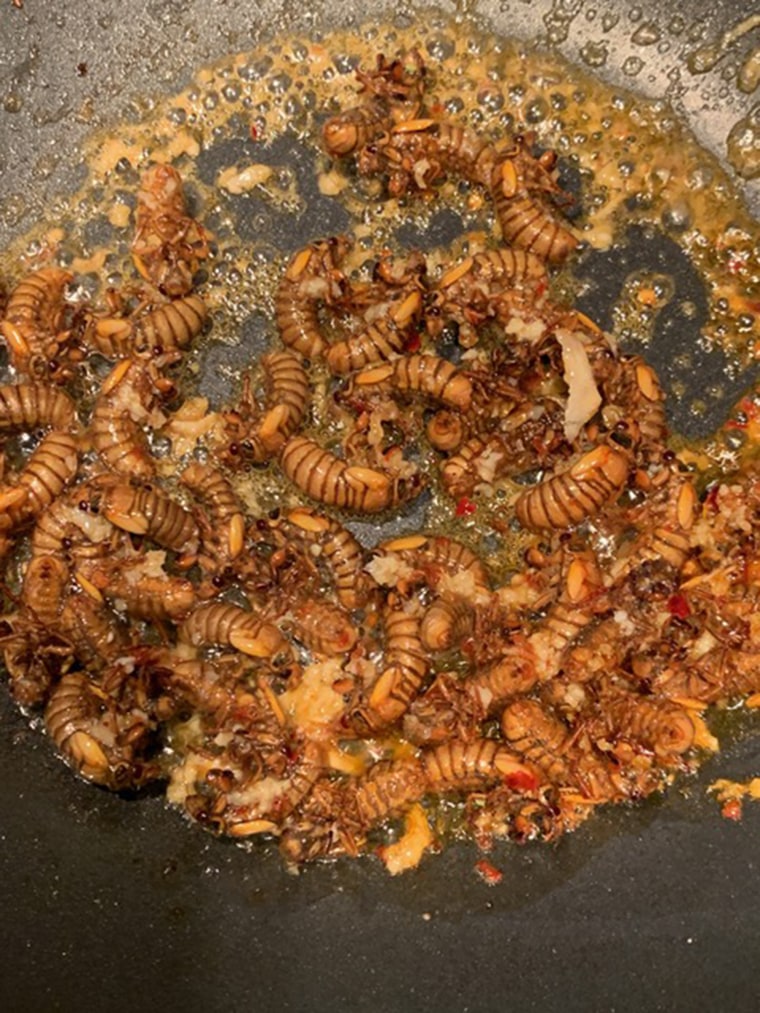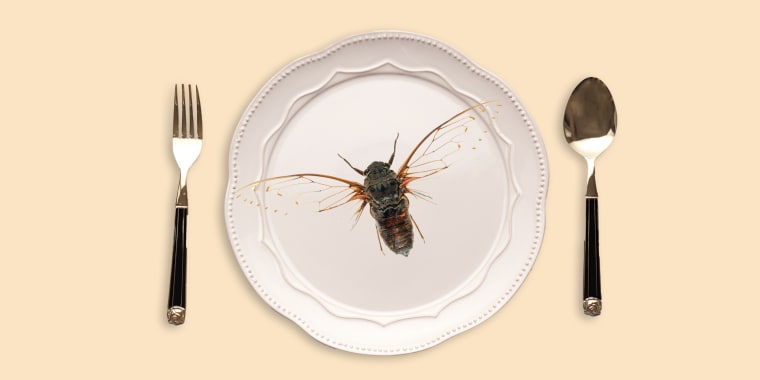The Brood X cicadas are already starting to emerge and while some people are bracing for their loud mating sounds and try to avoid stepping on their crunchy shells, others are ready to take to the kitchen with the insects to cook up a satisfying snack or fancy dinner.
Chefs like Joseph Yoon, who runs the educational website and social media channels @brooklynbugs have been busy preparing taste treats such as cicada nymph salad, guacamole — and even kimchi. It's not a joke but a rather elevated form of cooking that utilizes an oft-overlooked source of protein — insects.
According to the New York Post, Yoon has already made dozens of dishes with the cicada nymphs he's collected and plans to keep creating dishes that encompass every part of the life cycle of the Brood X bugs. As we know these cicadas emerge only ever 17 years, so this is a very special occasion indeed for entomophagists (that's a fancy word for bug-eaters).
Gene Kritsky, professor of biology at the College of Mount St. Joseph in Cincinnati and adjunct curator of entomology at the Cincinnati Museum Center even created an app, Cicada Safari, which tracks the locations of the Brood X cicadas via pics that other insect enthusiasts upload. Hint: look for the pinky-sized holes in the ground from which they emerge and the shells aka exoskeletons they leave behind before mating.
But are they safe to eat?
"It is fine to eat cicadas," Jess Fanzo, Ph.D., professor of global food policy and ethics at Johns Hopkins University and author of the upcoming book “Can Fixing Dinner Fix the Planet?” told TODAY Food in an email. "They are a high protein source of food, and have a reasonable amount of minerals like iron and zinc and some vitamins." Fanzo noted that the amount of nutrients depends on the insect and what it was feeding on while underground for 17 years.
"It's best to eat the nymphs that are just emerging from the ground," she said. "These are soft, and don’t have wings." Fanzo said it's preferable to collect the nymphs from nature settings since they won't be contaminated with any pesticides that are used to treat landscapes in urban areas.
Who shouldn't eat cicadas? Anyone with a seafood allergy, the FDA says — that's because the insects are related to shrimp and lobster.
"Cicadas are of course a very sustainable alternative protein source as far as the environment is concerned," she said. "Eating insects is very common in most parts of the world, and think it is great way to try out an alternative protein source that only comes around every 17 years here in the eastern US!"

Thinking of cooking up some cicadas tonight?
"The best way is to gather up the little nymphs, take them home and freeze them which humanely kills them," said Fanzo. "When you are ready to cook them, boil them for two minutes to get any dirt off. Then you can roast, sauté or fry them up." Fanzo suggested putting them in ramen noodles or on top of rice with veggies or in tacos. "I made them the other night, just fried them up in a little sesame oil with garlic and chiles. We ate them up as an appetizer all washed down with a cold beer. Delicious!"
